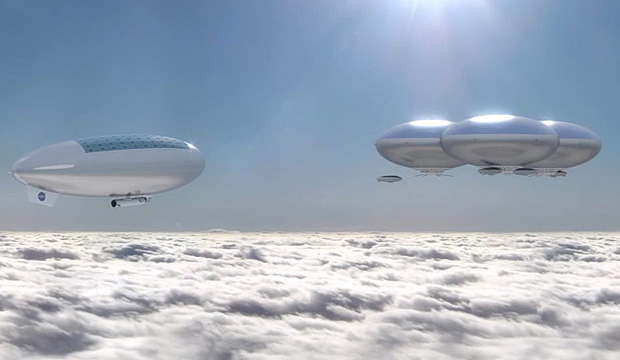NASA offers to master the atmosphere of Venus before the surface of Mars

For many decades, the concept of space exploration implied the use of the Moon and Mars as launching pads for further human expansion. A little later, the Moon began to be forgotten, but Mars became a popular topic of discussion and the goal of several space programs at once.
Nobody ever mentioned Venus in terms of a possible landing site for a man in the near foreseeable future. This is quite logical, because the temperature on the surface of Venus is about 500 degrees Celsius, and the pressure - 92 atmospheres. But the other day an interesting proposal came from Dale Arney and Chris Jones (Dale Arney and Chris Jones), representatives of NASA ( NASA’s Systems Analysis and Concepts Directorate at Langley Research Center ).
')

Experts suggest starting the exploration of Venus before the exploration of Mars. The concept of a new mission, called High Altitude Venus Operational Concept (HAVOC), has already been proposed. The main idea is to start mastering the upper layers of the atmosphere of Venus (altitude about 50 kilometers), where the pressure reaches only 1 earth's atmosphere, and the temperature is far from being as high as on the surface - “only” 75 degrees Celsius. This is only 17 degrees higher than the maximum rate recorded on Earth. For comparison, on Mars, the average temperature is -63 degrees. The main advantage of Venus over Mars is an increased level of solar radiation, which can be used to generate energy (photovoltaic cells here can receive 240 times more energy than on Mars). In addition, at an altitude of 50 kilometers, the radioactive background is about the same as in Canada. But on Mars, everything is much more complicated.
According to the authors of the idea, the conditions in the upper atmosphere of Venus are more mundane, so to speak, than the conditions prevailing on Mars.
Moreover, Venus itself is closer to Earth than Mars. An expedition to Venus would take about 440 days, 110 days one way, 30 days on Venus, and 300 days to return (if something happens, you can immediately return to Earth). But the expedition to Mars requires a minimum of 500 days in space. A more realistic timeframe is 650-900 days, with the need to stay there until an optimal orbital position appears, when you can return to Earth.

The HAVOC mission involves several stages of implementation, including robots visiting Venus to study the current situation (the Soviet stations were on Venus, but more data was needed for a manned expedition). Then it becomes possible to implement the next phase of the mission, with a stay in orbit for Venus for 30 days, as well as another phase with a trip to the upper atmosphere of Venus (and a 30-day stay).
Naturally, airplanes and other devices heavier than the Venusian "air" are not suitable for a long-term stay in the atmosphere. Instead, plan to use airships / balloons. Initially, it is planned to create a robotic version with a length of 31 meters, and then a ship with a length of 130 meters, on which there may be a team of astronauts. The top of the balloon will be covered with photovoltaic cells, the total area of which will be 1000 square meters.

Delivering such aircraft to Venus is not a trivial task, and the landing of people still complicates the mission, since there will be no solid surface, all the landing stages are planned to take place in the atmosphere. The ship (hidden inside a special capsule) will enter the Venusian atmosphere at a speed of 7,200 meters per second. Within 7 minutes, the speed will drop to 450 meters per second, thanks to parachutes. After that, the capsule will open, and the ship will go to "free floating" at a speed of 100 meters per second. At the same time the ship will be simultaneously filled with gas, increasing in size. After reaching the desired stage, the parachutes will be shot off, and the ship will begin to “sail” through the Venusian atmosphere at a height of 50 kilometers above the surface.
Source: https://habr.com/ru/post/364527/
All Articles